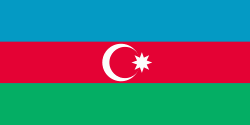Barda Rayon (Barda Rayon)
Materials and coins found in archaeological excavations related to the period of Alexander the Great, Arakis, and Empire of Rome prove that the center of the district (Barda city) is one of the oldest centers, not only in Azerbaijan but also in the Middle East. According to 9th-century Arabian historian Al-Baladhuri, Barda was established in the period of Kavadh I, who was a Sassanid ruler, while according to 14th-century Iranian historian Hamdallah Mustawfi it was from the period of Alexander the Great (336–323 BC).
Barda became the center of the region ruled by the governor during the Sassanid period. During the reign of Kavadh I, Barda was surrounded by fortress walls. It was the capital of Albania in the 10th century. The center of the Albanian church was moved to Barda in 552 and was occupied by Iranian feudalists in 639. Thereafter, Barda received autonomy with the help of Javanshir, who was the ruler of Alban. It became a central part of Arran Province in 752. Barda was part of the Sassanid state until the 890s.
The remains of cultural items from the 2nd millennium BC to the late Middle Ages have been found and preserved in Barda. The cultural items include a Barda tomb built in 1322, remains of old city walls from the 6th century, the Ibrahim Mosque (18th-century cemetery), two bridges from the 7th–9th centuries on the Tartar River, the Axsadan Baba tomb of the 14th century, and an eight-point tomb in the village of Guloghlular from the 18th century. All of these findings are well-preserved by the government. In addition, the Juma mosque (built in Barda city in 1905), a 19th-century bathhouse, the 19th-century Ugurbeyli Mosque, the Bahman Mirza Mausoleum, and other historical and architectural monuments were found in Shirvanli village.
Barda consisted of two parts: Shahristan and Rabad. The city center was in Shahristan, which was surrounded by fortress walls. Meanwhile, there were craftsmen, merchants, and caravanserais in the place called Rabat.
Barda District was established in 1930 as an independent administrative unit.
Map - Barda Rayon (Barda Rayon)
Map
Country - Azerbaijan
 |
 |
| Flag of Azerbaijan | |
The Azerbaijan Democratic Republic proclaimed its independence from the Transcaucasian Democratic Federative Republic in 1918 and became the first secular democratic Muslim-majority state. In 1920, the country was incorporated into the Soviet Union as the Azerbaijan SSR. The modern Republic of Azerbaijan proclaimed its independence on 30 August 1991, shortly before the dissolution of the Soviet Union in the same year. In September 1991, the ethnic Armenian majority of the Nagorno-Karabakh region formed the self-proclaimed Republic of Artsakh. The region and seven surrounding districts are internationally recognized as part of Azerbaijan pending a solution to the status of the Nagorno-Karabakh through negotiations facilitated by the OSCE, although became de facto independent with the end of the First Nagorno-Karabakh War in 1994. Following the Second Nagorno-Karabakh War in 2020, the seven districts and parts of Nagorno-Karabakh were returned to Azerbaijani control.
Currency / Language
| ISO | Currency | Symbol | Significant figures |
|---|---|---|---|
| AZN | Azerbaijani manat | ₼ | 2 |
| ISO | Language |
|---|---|
| HY | Armenian language |
| AZ | Azerbaijani language |
| RU | Russian language |















